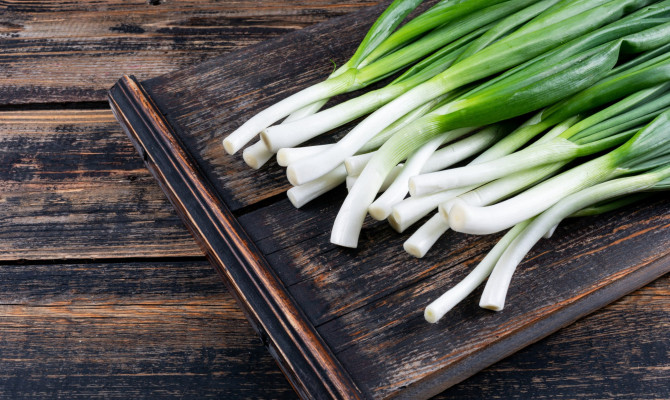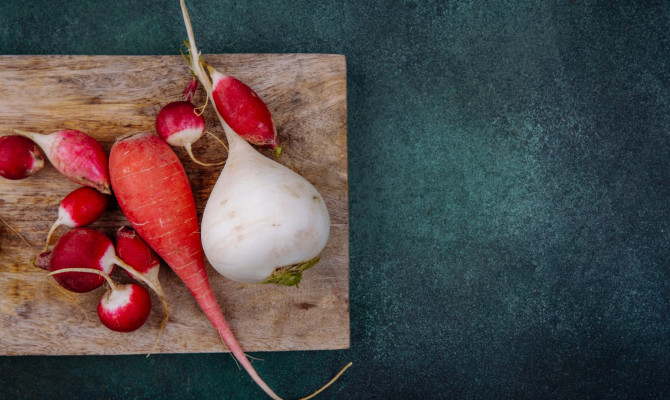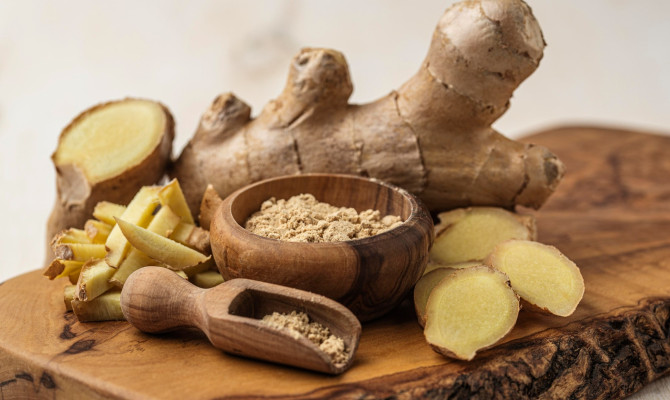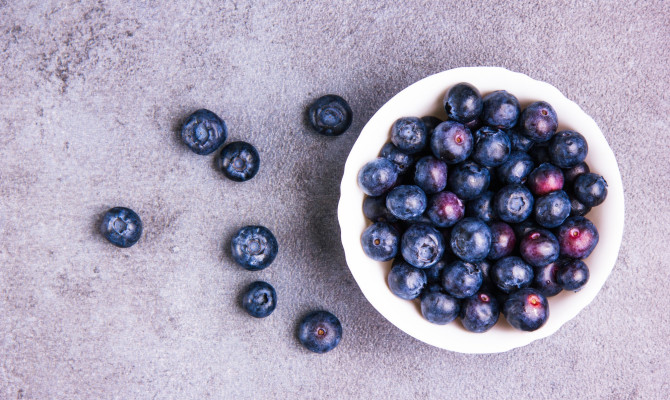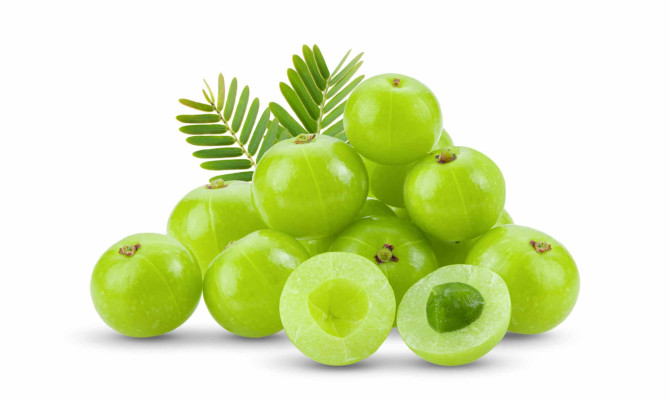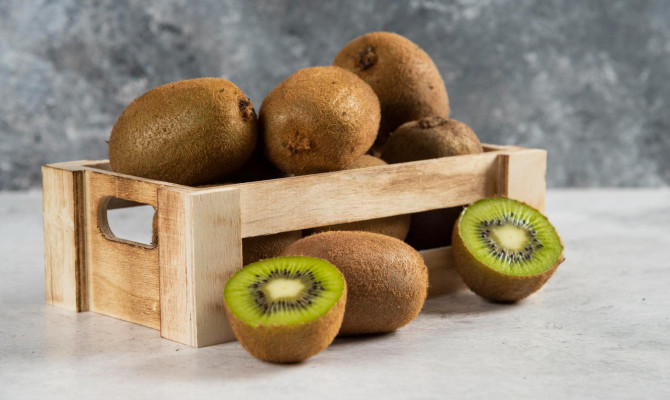Exploring Nutritious Kohlrabi

- Kohlrabi
- 22 Aug 2023
Overview
What is Kohlrabi?
Kohlrabi is a Brassica vegetable from the mustard family (Brassicaceae). It is a related vegetable like broccoli, cauliflower, cabbage, kale, and mustard greens. It has a green, purple, white round swollen bulb and elongated leafy stems. The interior part of the vegetable, when sliced, appears yellowish-white. The appearance of Kohlrabi is quite unusual, with several branches emerging from the bulb. It is a cold-weather crop that grows in spring, autumn, and winter.
The edible parts of Kohlrabi are stems, leaves, and bulbs. The taste of Kohlrabi resembles broccoli but has a somewhat sweet taste. One can eat Kohlrabi in both cooked and raw form. Kohlrabi is quite versatile, and it goes well with various dishes.
Kohlrabi is not cultivated commercially on massive scales; still, this vegetable is gaining popularity because of its multiple health benefits.
The article will glimpse the Kohlrabi vegetable, its nutrition, health benefits, precautions, risk, and tips to include in the diet.
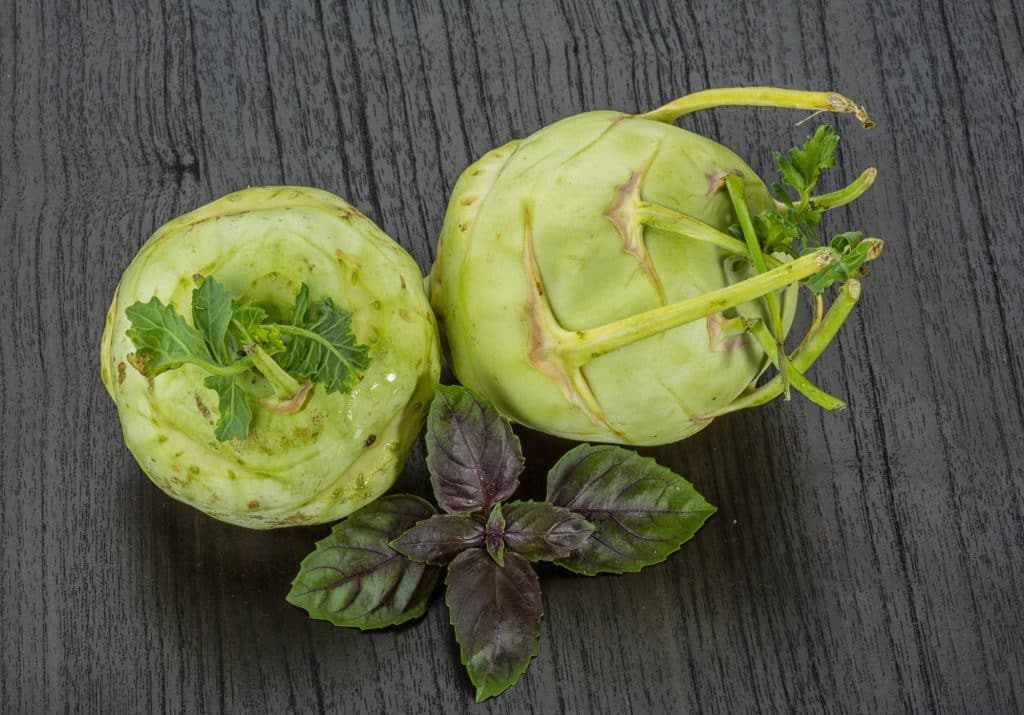
Here are some quick facts about Kohlrabi
- Botanically, Kohlrabi is known as Brassica oleracea
- The other names of Kohlrabi are Turnip cabbage and German turnip. Despite its common name as turnip, Kohlrabi is not from the turnip family
- Kohlrabi is indigenous to Northern Europe, but now it is grown worldwide
- Many people believe Kohlrabi was a new vegetable revealed just in the early part of the sixteenth century 1Overview| Researched based study from Sciencedirect.com
Nutrition
Nutrition in Kohlrabi
135 grams of raw Kohlrabi has the following nutrients:
- Calories-36
- Fiber- 5 gm(gram)
- Protein- 2 gm
- Carbohydrate-8 gm
- Vitamin C- 93% of DV (Daily value)
- Magnesium- 6% of DV
- Potassium- 10% of DV
- Vitamin B6– 12%of DV
- Manganese-8% of DV
- Folate- 5% of DV [2]
The daily value (DV) is the indicated quantity to eat every day
The % daily value (%DV) is the daily value percentage for each nutrient in a food part.
Some other Vitamins and minerals in Kohlrabi are as follows:
- Copper
- Thiamine
- Phosphorus
- Vitamin E
- Calcium
- Iron 2Nutrition| Researched based study from Usda.gov
Fiber, minerals, and vitamins have the following function in our body:
- Fiber-It softens the stool and hastens its movement in the intestine and improves the gut health
- Vitamin C- It is fundamental for healthy bones and skin and helps restore the tissues
- Magnesium- It supports muscle functions and maintains the regular bone health
- Potassium- It is important for the fluid balance of the body and maintains the body’s blood pressure
- Vitamin B6 (Pyridoxine) – is fundamental for accurate brain functioning, supports immune systems, and assists in red blood cell formation.
- Manganese- supports fat and carbohydrate metabolism and helps bodily processes work suitably.
- Folate- is crucial for average cell performance and tissue and cell growth
Bioactive compounds in Kohlrabi
Flavonoids
- Flavonoids are phenolic compounds found in green vegetables and plants
- It has anti-inflammatory (reduces pain and swelling) and antioxidant properties
Glucosinolates
- It is a sulfur-containing compound present in cruciferous vegetables
- It has anti-carcinogenic properties
Sulforaphane
- Sulforaphane is a compound present in leafy vegetables
- It has antioxidant, anti-tumor, and sugar-lowering properties
Isothiocyanates
- Isothiocyanates are natural substances found in vegetables and plants
- It has anti-tumor and antioxidant properties 3Nutrition| Researched based study from Nlm.nih.gov
Properties
Properties of Kohlrabi
Kohlrabi has the following properties:
- Antioxidant properties
- Sugar lowering properties
- Anti-inflammatory properties
- Anti-tumor properties
- Cardio-protective properties
Health Benefits
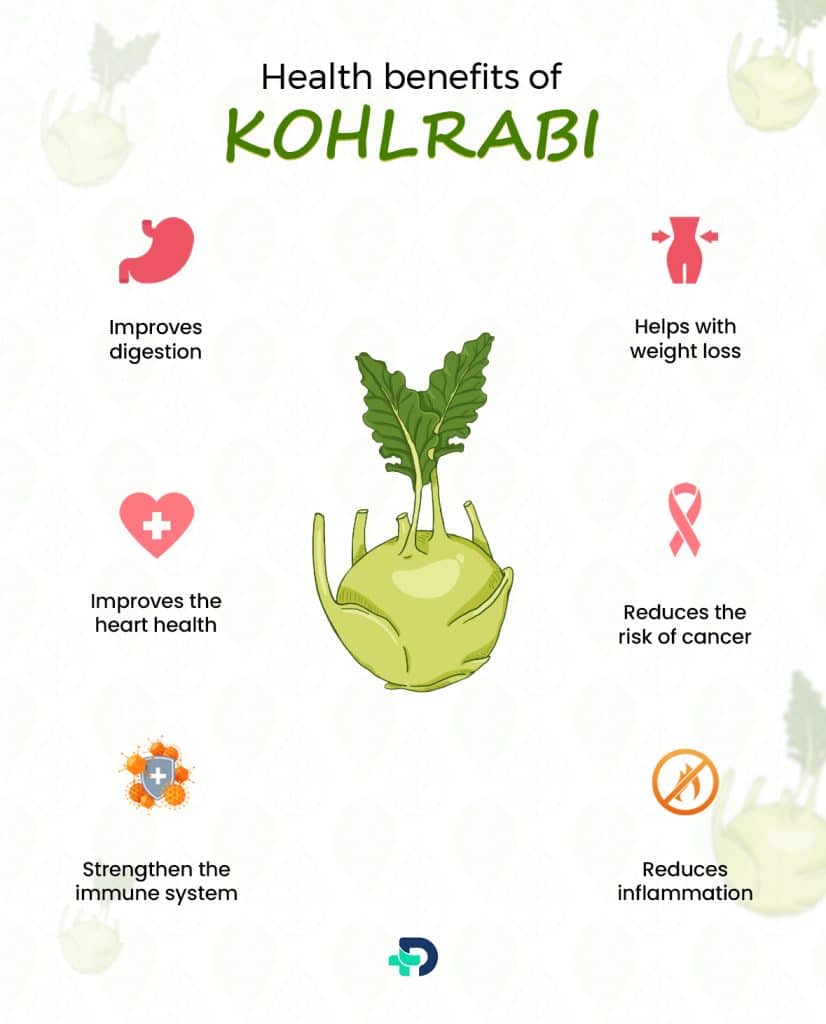
Health Benefits of Kohlrabi
Kohlrabi has the following health benefits:
- Improves digestion
- Improves the heart health
- Strengthen the immune system
- Reduces the risk of cancer
- Reduces inflammation
- Helps with weight loss
Improves digestion
- Fibers in Kohlrabi promote the development of helpful bacteria in the gut
- It increases the stool’s bulk and prevents constipation 4Benefits| Researched based study from Nlm.nih.gov
Improves the heart health
- Isothiocyanates and glucosinolates in Kohlrabi prevent plaque (fat deposits) accumulation in the arteries.
- It decreases the risk of cardiac problems such as stroke 5Benefits| Researched based study from Nlm.nih.gov
Strengthen the immune system
- Kohlrabi’s nutrients might help the body in combating infections
- It helps in the construction of immune cells viz; T-cells responsible for preventing infections 6Benefits| Researched based study from Nlm.nih.gov
Reduces the risk of cancer
- Kohlrabi’s nutrients avoid the formation of abnormal cell growth
- It decreases the risk of colon, breast, and lung cancer 7Benefits| Researched based study from Nlm.nih.gov
Reduces inflammation
- Nutrients in Kohlrabi decrease the swelling and pain
- It reduces the body’s inflammatory marker viz; C-reactive protein 9Benefits| Researched based study from Nlm.nih.gov
Helps with weight loss
- Kohlrabi’s nutrients keep the stomach full and improve satiety
- It reduces excess food intake in subsequent meals and reduces weight 8Benefits| Researched based study from Sciencedirect.com
Side effects
Side effects of Kohlrabi
Most people can well bear Kohlrabi when taken in reasonable food amounts.
However, some people might confront the following side effects:
- Hives
- Severe itching
- Stomach pain
- Skin reaction
- Swelling in the lips, mouth, and face
- Respiratory issues 1Side effects| Researched based study from Sciencedirect.com
Major risks of Kohlrabi
Thyroid problem
- The thyroid is a tiny secretory organ in the neck that requires iodine to perform its work. Overeating Kohlrabi might impede the iodine absorption by the thyroid gland and stop its accurate functioning. So, one must avoid overeating Kohlrabi in a single meal.
Bloating (stomach gas)
- High-fiber food generally causes bloating. People increasing their fiber intake for fitness reasons should increase it gradually, as a quick increase in cruciferous vegetables might cause flatulence and bloating.
Moreover, Kohlrabi might not be fit for people with the following health issues viz;
- Allergic to the cruciferous vegetable
- Thyroid problems
- People on blood thinning medication 10Side effects| Researched based study from Nlm.nih.gov
Selection
Buying & Selection of Kohlrabi
- One can buy Kohlrabi from the local farmer’s market in season time, i.e., from spring to autumn or from supermarkets and food stores throughout the year.
- While selecting, choose the bulbs that are hard to touch without blemishes. Avoid Kohlrabi that has tears or signs of infection.
Storage
Storage of Kohlrabi
- After removing the leaves, store the Kohlrabi bulb in a plastic bag in the refrigerator. It can stay unspoiled for a few weeks as such.
- Store the leaves separately in the freeze. It remains fresh for up to two to three days. It’s better to consume the leaves within a day or two.
- Store chopped pieces of Kohlrabi bulb in a sealed vessel in the refrigerator.
Takeaway
Key Takeaways
- Kohlrabi is a delicious, nutritious cruciferous vegetable with several health advantages.
- It is abundant in fibers, vitamins, and minerals that support the gut and enhance the immune system.
- It also has antioxidants that protect against chronic diseases and cancer
- Kohlrabi is easy to cook and can easily add to several recipes.
- Kohlrabi can be a superb addition to a healthy balanced diet
Any feedback on this article?
 This Articles content was accurate
This Articles content was accurate Very Informative Article
Very Informative Article I have a question or a comment
I have a question or a comment
 This article contains inaccurate content
This article contains inaccurate content This article was not helpful
This article was not helpful I have a question or a comment
I have a question or a comment
We appreciate your helpful feedback!
Checkout our social pages
References
-
Science Direct
Kohlrabi - an overview | Overview
-
U.S. DEPARTMENT OF AGRICULTURE
Kohlrabi, raw | Nutrition
-
National Library of Medicine
Isothiocyanate concentration in Kohlrabi (Brassica oleracea L. Var. gongylodes) plants as influenced by sulfur and nitrogen supply | Nutrition
-
National Library of Medicine
Health effects of dietary fiber | Benefits
-
National Library of Medicine
Cruciferous and Allium Vegetable Intakes are Inversely Associated With 15-Year Atherosclerotic Vascular Disease Deaths in Older Adult Women | Benefits
-
National Library of Medicine
Effects of Vitamin B6 Deficiency on the Composition and Functional Potential of T Cell Populations | Benefits
-
National Library of Medicine
Epidemiological studies on brassica vegetables and cancer risk | Benefits
-
Science Direct
Dietary fiber and body weight | Benefits
-
National Library of Medicine
Cruciferous Vegetable Intake Is Inversely Correlated with Circulating Levels of Proinflammatory Markers in Women | Benefits
-
National Library of Medicine
The Impact of Kohlrabi Sprouts on Various Thyroid Parameters in Iodine Deficiency- and Sulfadimethoxine-Induced Hypothyroid Rats | Side effects












